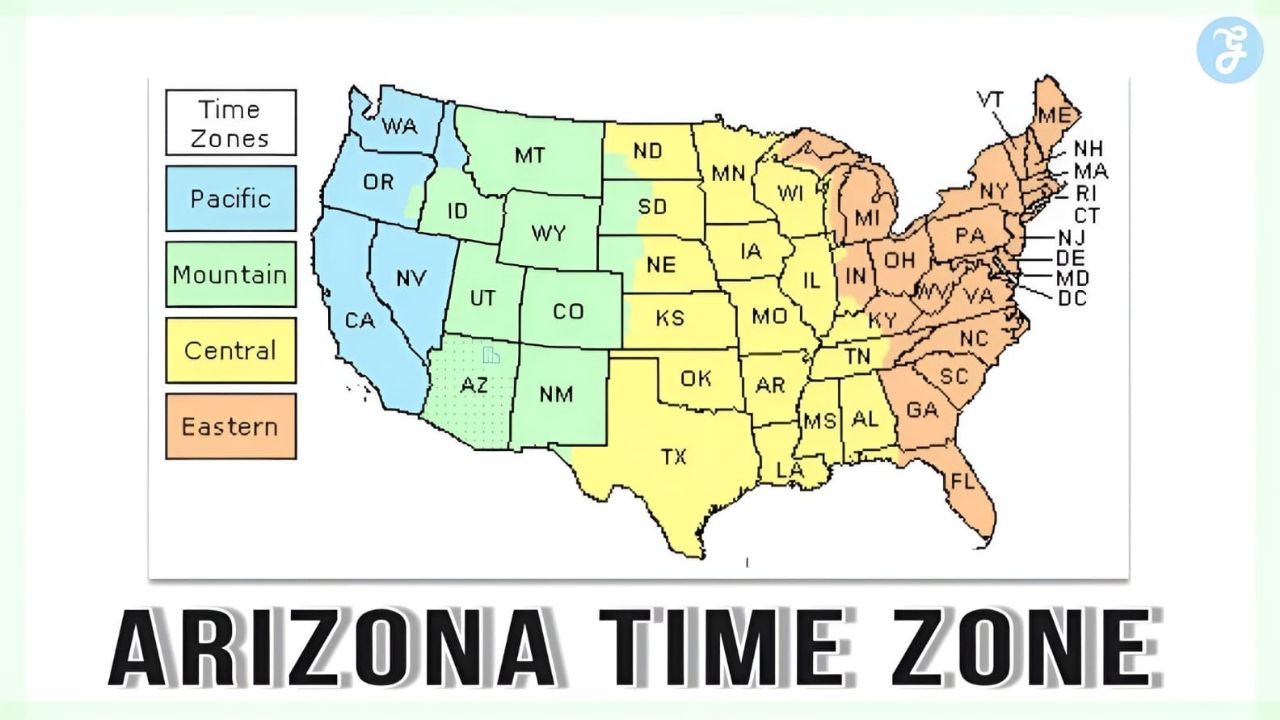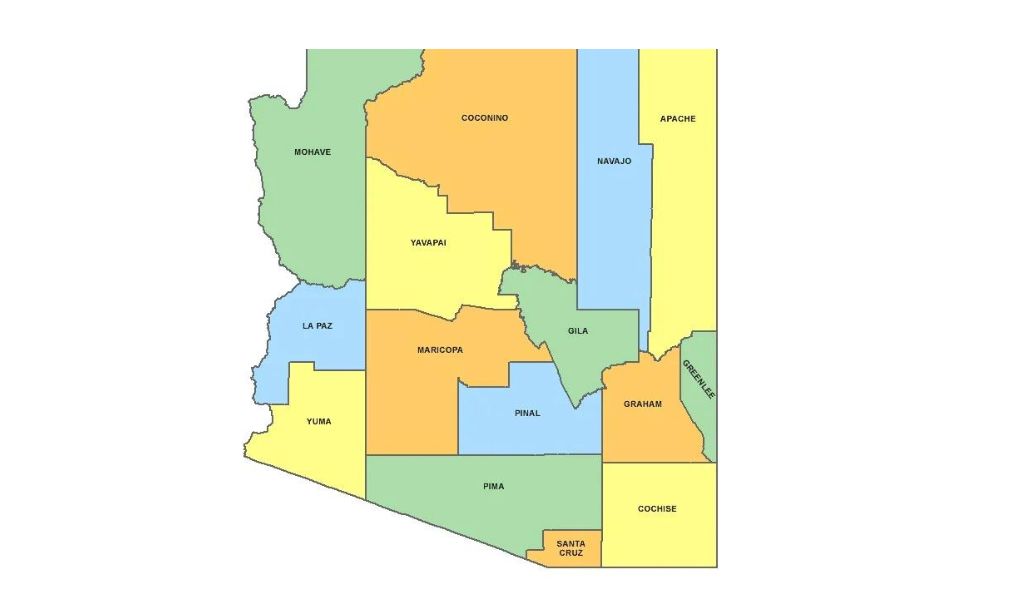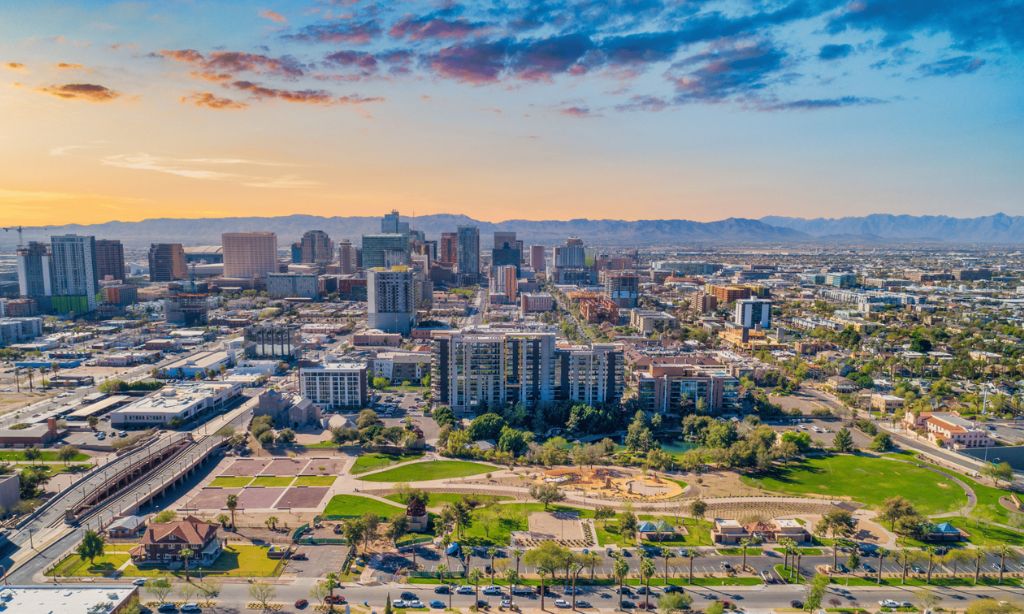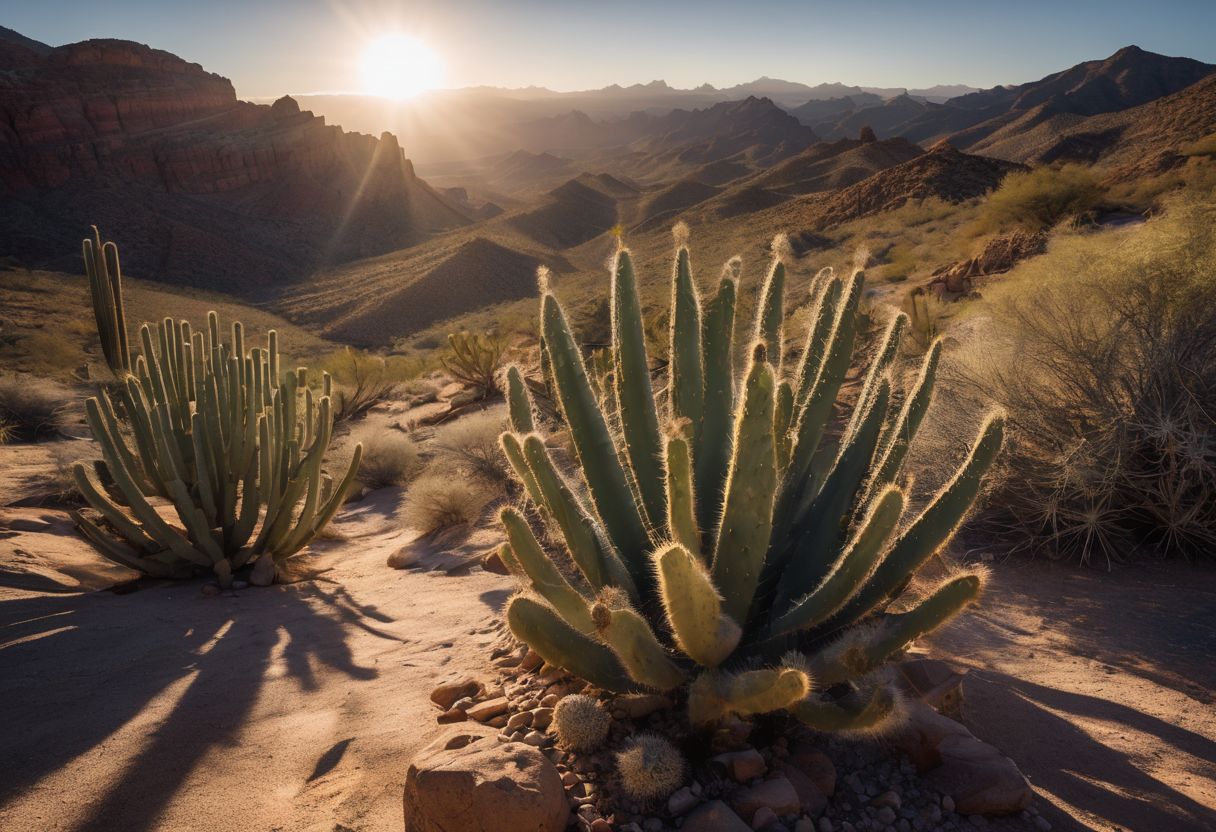Traveling or communicating with Arizona can be a bit confusing owing to its unique time zone rules. While most of the state stays on Mountain Standard Time (MST) throughout the year, exceptions do exist, such as in the Navajo Nation.
This blog will help you navigate Arizona’s time zone quirks, offering clarity about when and where daylight saving applies within the state. Let’s dive into unraveling this geographical anomaly!
Content Highlights
- Arizona follows Mountain Standard Time (MST) all year round without observing daylight saving time.
- The Navajo Nation within Arizona follows Mountain Daylight Time (MDT) and does observe daylight saving time.
- Arizona’s decision not to observe daylight saving time is driven by factors such as extreme heat, energy conservation, and maintaining a consistent daily routine for residents.
- Traveling and communicating in Arizona may require adjustments due to the state’s unique time zone situation.
Details of Arizona Time Zone
Arizona follows two time zones depending on the season – Mountain Standard Time (MST) and Mountain Daylight Time (MDT).
Important Details of Arizona Time Zone
- Official time zone: Mountain Time Zone (MT)
- Observes Daylight Saving Time (DST): No
- UTC offset: UTC-7 (all year)
Arizona is one of only two states in the United States that does not observe Daylight Saving Time. This means that Arizona has the same time as neighboring states California and Nevada during the summer season when those states observe DST.
The Navajo Nation, located in Arizona, observes Daylight Saving Time. This means that the Navajo Nation is one hour ahead of the rest of Arizona during the summer months.
Here is a table showing the time difference between Arizona and other major US cities:
| City | Time difference |
|---|---|
| Los Angeles, CA | No difference |
| Phoenix, AZ | No difference |
| San Diego, CA | No difference |
| Seattle, WA | 1 hour ahead |
| Denver, CO | No difference |
| Chicago, IL | 1 hour ahead |
| New York, NY | 2 hours ahead |
Mountain Standard Time (MST)
Arizona uses Mountain Standard Time (MST) all year. MST is common in this state. This sets it apart from many others. Arizona does not change its clocks for daylight saving time. It sticks to MST even then.
So, while other states shift their clocks, Arizona’s time stays the same. This makes knowing the current local time easier for people in Arizona.
Mountain Daylight Time (MDT)
Mountain Daylight Time (MDT) is set at UTC -6h. This means it falls six hours behind the world’s Coordinated Universal Time. Tuba City in Arizona follows Mountain Daylight Time. However, most of the state does not keep to this time.
There are a few exceptions, though! The Navajo Nation within Arizona uses Mountain Daylight Time. They stand apart from the rest of the state by following this rule.
Navajo Nation and Hopi reservations
In Arizona, the Navajo Nation lives by Mountain Time Zone rules. This means they move their clocks one hour ahead in spring and back again in fall because the tribe follows daylight saving time.
But this is not what happens in all of Arizona! The Hopi Reservation, which lies within the Navajo Nation lands, does not use daylight saving time. They keep their time steady all year round, just like most parts of Arizona.
So be careful when you travel between these two reservations, as your clock might need to change more often than you think!
Read Also The Dallas Time Zone: A Must-Know for Travelers
Arizona’s Unique Time Zone Situation
Arizona made the decision not to observe daylight saving time, which sets it apart from most other states.
Arizona’s choice not to observe daylight saving time
Arizona is unique because it doesn’t follow daylight saving time. This means that the clocks in Arizona don’t go forward or back like they do in other places. The decision to not observe daylight saving time was made because of the state’s unique time zone situation.
Arizona wanted to avoid confusion and inconsistencies with time across the state. So, when most people are changing their clocks for daylight saving time, people in Arizona can just keep their clocks the same all year round.
Reasons behind Arizona’s decision
Arizona has made the decision not to observe daylight saving time for several reasons. One of the main factors is the extreme heat that Arizona experiences during the summer months.
By opting out of daylight saving time, residents and businesses can avoid having to endure an extra hour of sunlight in the hottest part of the day. This helps to conserve energy and reduce strain on air conditioning systems.
Another reason behind Arizona’s decision is the impact on sleep patterns. Daylight saving time can disrupt our internal clocks, leading to less restful sleep. With Arizona’s choice not to observe it, residents can maintain a consistent schedule year-round, which can positively affect overall well-being.
In addition, not participating in daylight saving time allows businesses and schools in Arizona to save on energy bills by operating under a fixed schedule throughout the year. This consistency provides stability and convenience for both individuals and organizations within the state.
Current Local Time in Arizona
Arizona is currently observing Mountain Standard Time (MST), which is 7 hours behind Coordinated Universal Time (UTC-7).
Current time in Phoenix and other cities in Arizona
Arizona has a number of significant cities, each following the Mountain Time Zone. Below is a table detailing the current local times in some of these cities. Be aware that these times do not adjust for daylight saving, as most of Arizona does not observe it.
| City | Current Local Time |
|---|---|
| Phoenix | The current local time in Phoenix is 33 minutes ahead of the apparent solar time. |
| Tucson | Like the rest of Arizona, Tucson does not observe daylight saving time and remains on Mountain Standard Time year-round. |
| Mesa | Mesa follows the same time as the majority of the state – Mountain Standard Time, with no daylight saving time. |
| Chandler | Chandler also stays on Mountain Standard Time throughout the year without any daylight saving time. |
| Scottsdale | Scottsdale does not adjust for daylight saving time, remaining on Mountain Standard Time year-round. |
| Glendale | Glendale operates on Mountain Standard Time, with no daylight saving time. |
| Tempe | Tempe follows the rest of Arizona in not observing daylight saving time, staying on Mountain Standard Time all year. |
Please note the Navajo Nation in northeastern Arizona does observe Daylight Saving Time. So, if you’re traveling to or communicating with this area, you’ll need to adjust accordingly. The current local time in Arizona can be found on any trusted independent resource or the official website of the City of Phoenix, Arizona.
Time Zone Changes in Arizona
Arizona has a history of time zone changes, with various adjustments made over the years.
Arizona’s history of time zone changes
Here is Arizona’s history of time zone changes:
- Since 1968, most of Arizona has remained on Mountain Standard Time (MST) and does not observe daylight saving time.
- In 1967, Arizona temporarily adopted daylight saving time from April to October but decided not to participate in it afterward.
Read More: Stay Ahead with our Latest Guide to UTC Time Zone
Impact of time zone changes on residents and businesses
Arizona’s Time zone changes can significantly impact residents and businesses. Because Arizona does not observe daylight saving time, so this can cause confusion when scheduling meetings or coordinating with other states that follow the time change.
Travelers and businesses operating in multiple time zones may also face challenges due to the discrepancy in time. Additionally, the lack of alignment in time zones might affect transportation, travel, and commerce between Arizona and other states.
To mitigate these issues, some individuals and businesses may adjust their schedules or coordinate with other states during daylight saving time to ensure smooth operations. It’s important to note that permanent daylight saving time could also affect the health and well-being of residents due to changes in sleep patterns and circadian rhythms.
Arizona Time Zone Map
The Arizona Time Zone Map provides a clear visual representation of the different time zones within the state, helping to clarify the boundaries and distinctions between Mountain Standard Time (MST) and Mountain Daylight Time (MDT).
Visual representation of Arizona’s time zones
The time zones in Arizona can be a bit confusing, but a visual representation can help make things clearer. Arizona has two main time zones: Mountain Standard Time (MST) and Mountain Daylight Time (MDT).
Most of the state follows MST all year round, which means they don’t change their clocks for daylight saving time. However, some parts of Arizona switch to MDT during daylight saving time.
The Navajo Nation also has its own separate time zone, which may not align with the rest of the state. With a map showing these boundaries, it becomes easier to understand how Arizona’s different time zones are divided.
Clarifying the boundaries of each time zone
The boundaries of each time zone in Arizona depend on where you are in the state. Most of Arizona, including Phoenix, follows Mountain Standard Time (MST) annually. This means they don’t have daylight saving time, and their clocks stay the same throughout the year.
However, there is an exception for the Navajo Nation within Arizona. The Navajo Nation has its own time zone that differs from MST. So if you’re traveling through or visiting areas like Monument Valley, make sure to check the local time as it may be different from other parts of Arizona.
Time difference between Arizona and other states/countries
The time difference between Arizona and other states/countries varies because Arizona does not observe Daylight Saving Time, except within the Navajo Nation.
| Country/State | Time difference with Arizona |
|---|---|
| New York, USA | +2 hours during standard time, +3 hours during daylight saving time |
| California, USA | Same time during standard time, -1 hour during daylight saving time |
| London, UK | +7 hours during standard time, +8 hours during daylight saving time |
| Sydney, Australia | +17 hours during standard time, +18 hours during daylight saving time |
| Beijing, China | +15 hours, no daylight saving time observed |
Please note that this table represents the time difference during standard time and daylight saving time. Daylight Saving Time begins on the second Sunday in March and ends on the first Sunday in November in most parts of the United States, altering the time difference with Arizona. It’s always advisable to check the current local time in Arizona before planning any cross-time zone activities.
How Arizona’s time zone affects travel and communication
Travel and communication in Arizona can be affected due to its unique time zone situation. Unlike other states, Arizona does not observe daylight saving time. This means that while neighboring states may change their clocks for the time change, Arizona remains in Mountain Standard Time (MST) throughout the year.
This can lead to confusion when scheduling meetings or coordinating travel with individuals or businesses in different states. The time difference between Arizona and neighboring states that observe daylight saving time can vary throughout the year, causing challenges for travelers adjusting their schedules accordingly.
It’s important for visitors and residents alike to be aware of this difference to avoid any miscommunication or missed appointments.
Read Also: The Pacific Time Zone: A Look at the Cities and States
Arizona’s Time Zone News and Updates
Arizona’s Time Zone News and Updates: Stay informed about the latest developments in Arizona’s time zone policies, including any proposed changes or discussions regarding time zone adjustments.
Recent developments in Arizona’s time zone policies
Recently, some updates and discussions have been regarding Arizona’s time zone policies. Here are the important facts you need to know:
- The Sunshine Protection Act, which aims to make daylight saving time permanent across the United States, recently passed the U.S. Senate. However, this act will have little impact on Arizonans since the state does not observe daylight saving time.
- Arizona is the only state in the contiguous US that has chosen not to participate in daylight saving time. This decision was made for various reasons, including concerns about energy usage and avoiding unnecessary clock changes.
- In the past, Arizona did observe daylight saving time from 1918 to 1968. However, states could opt out of daylight saving time with the passage of the Uniform Time Act of 1966.
- As of 2024, Arizona will still remain on standard time and will not observe daylight saving time like many other states do.
Proposed changes or discussions regarding time zone adjustments
- Arizona has seen proposed discussions and changes related to its time zone adjustments.
- The Sunshine Protection Act is a proposed legislation that could impact Arizona’s time zone.
- This act would allow Arizona to stay on Mountain Standard Time all year without changing for daylight saving time (DST).
- If the Sunshine Protection Act were to pass, it would mean that Arizona would not have to adjust its clocks twice a year as other states do.
- Some believe that staying in one time zone all year round would be more convenient and less confusing for residents and businesses in Arizona.
- However, there are also concerns about the potential impact on travel and communication with other states or countries if Arizona were to differ from neighboring regions’ time zones permanently.
- As of now, these proposals are being discussed and debated, and no final decisions have been made regarding any changes to Arizona’s time zone.
Impact of Arizona’s Time Zone on Daily Life
The absence of daylight saving time in Arizona significantly impacts residents’ work schedules, school routines, and daily activities.
Effects on work schedules, school schedules, and daily activities
Arizona’s unique time zone situation significantly impacts work schedules, school schedules, and daily activities. Since Arizona does not observe Daylight Saving Time, it remains on Mountain Standard Time (MST) throughout the year.
This means that while other states may gain or lose an hour of daylight during DST transitions, Arizona maintains a consistent time. For residents and businesses in bordering states or those who frequently communicate with people in different time zones, this can lead to scheduling challenges and confusion.
Furthermore, the absence of Daylight Saving Time also affects school schedules, with start and end times remaining consistent regardless of the season. Overall, Arizona’s decision not to participate in Daylight Saving Time has practical implications for daily life that require adjustment and awareness.
Adjustments made by businesses and organizations
Arizona’s Businesses and organizations have adjusted to accommodate the state’s unique time zone situation. Since Arizona does not observe daylight saving time, they must ensure that their schedules and operations align with Mountain Standard Time (MST) all year round.
This means that businesses need to plan accordingly for meetings, appointments, and deliveries. Additionally, companies that operate across different time zones may need to consider the time difference when communicating with clients or partners outside of Arizona.
These adjustments are necessary to ensure smooth functioning and effective communication within and outside of the state.
Also Read: Mastering GMT Time Zone
Frequently Asked Questions (FAQs)
Check out the answers about the Arizona time zone if you have any queries.
1. Does Arizona observe daylight saving time?
No, Arizona does not observe daylight saving time. It remains on Mountain Standard Time (MST) all year round.
2. Is the entire state of Arizona in the same time zone?
Yes, the entire state of Arizona is in the Mountain Standard Time (MST) zone. There are no different time zones within the state.
3. What is the current time in Arizona?
The current time in Arizona depends on whether it is observing standard or daylight saving time and can vary throughout the year. It’s best to check a reliable source like a clock or an online world clock for accurate information.
4. Are there any exceptions to Arizona’s standard time zone?
While most parts of Arizona follow Mountain Standard Time (MST), there are some exceptions, such as the Navajo Nation, which observes daylight saving time, and Hopi Reservation, which remains on standard time all year round due to their sovereignty.








































